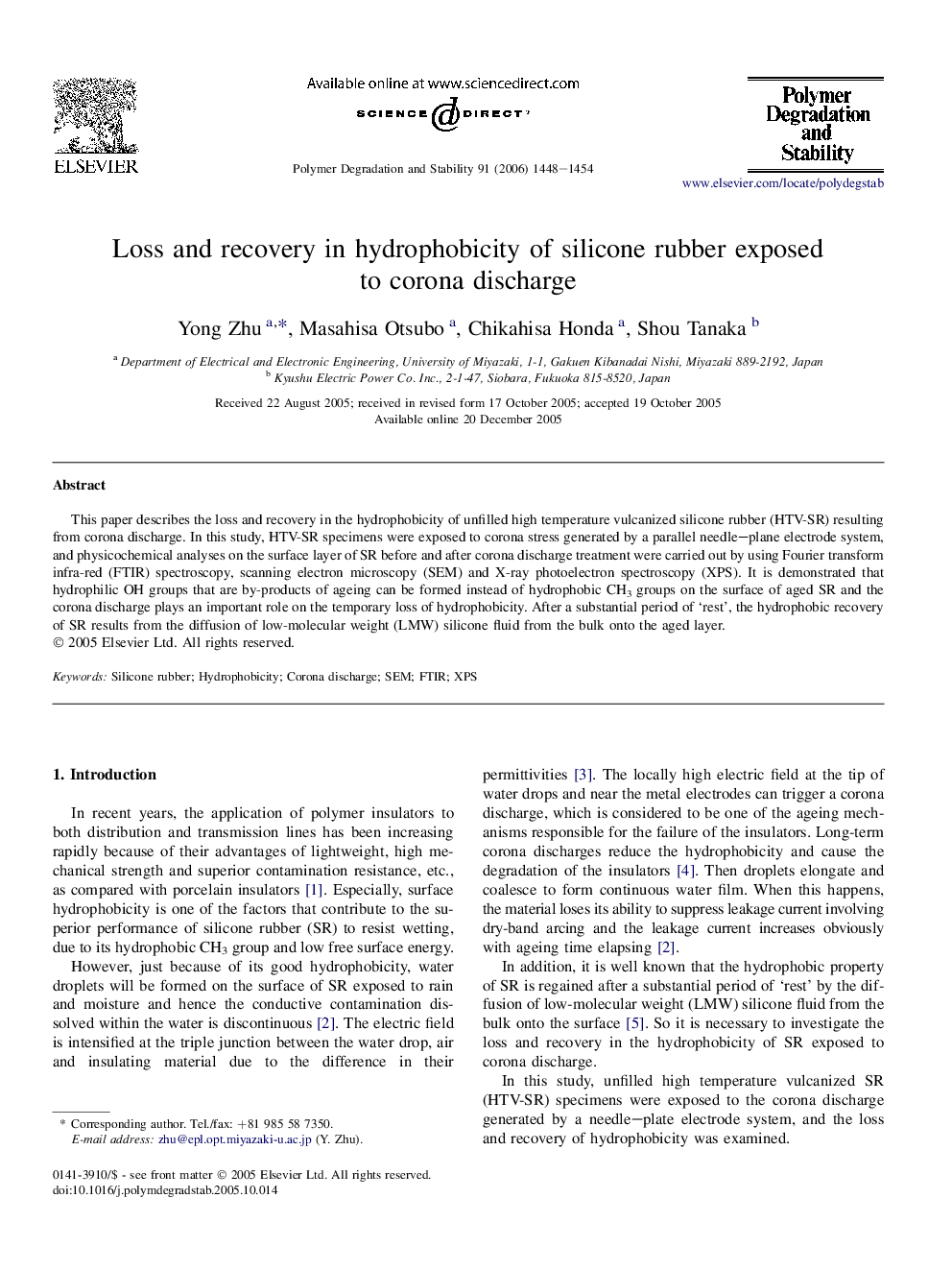| Article ID | Journal | Published Year | Pages | File Type |
|---|---|---|---|---|
| 5205018 | Polymer Degradation and Stability | 2006 | 7 Pages |
Abstract
This paper describes the loss and recovery in the hydrophobicity of unfilled high temperature vulcanized silicone rubber (HTV-SR) resulting from corona discharge. In this study, HTV-SR specimens were exposed to corona stress generated by a parallel needle-plane electrode system, and physicochemical analyses on the surface layer of SR before and after corona discharge treatment were carried out by using Fourier transform infra-red (FTIR) spectroscopy, scanning electron microscopy (SEM) and X-ray photoelectron spectroscopy (XPS). It is demonstrated that hydrophilic OH groups that are by-products of ageing can be formed instead of hydrophobic CH3 groups on the surface of aged SR and the corona discharge plays an important role on the temporary loss of hydrophobicity. After a substantial period of 'rest', the hydrophobic recovery of SR results from the diffusion of low-molecular weight (LMW) silicone fluid from the bulk onto the aged layer.
Related Topics
Physical Sciences and Engineering
Chemistry
Organic Chemistry
Authors
Yong Zhu, Masahisa Otsubo, Chikahisa Honda, Shou Tanaka,
